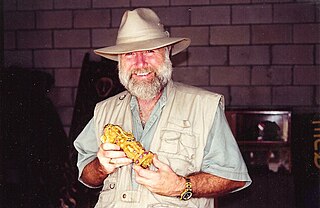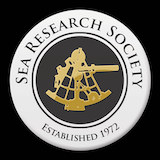
Underwater archaeology is archaeology practiced underwater. As with all other branches of archaeology, it evolved from its roots in pre-history and in the classical era to include sites from the historical and industrial eras.

H. L. Hunley, also known as the Hunley, CSS H. L. Hunley, or CSS Hunley, was a submarine of the Confederate States of America that played a small part in the American Civil War. Hunley demonstrated the advantages and dangers of undersea warfare. She was the first combat submarine to sink a warship (USS Housatonic), although Hunley was not completely submerged and, following her attack, was lost along with her crew before she could return to base. Twenty-one crewmen died in the three sinkings of Hunley during her short career. She was named for her inventor, Horace Lawson Hunley, shortly after she was taken into government service under the control of the Confederate States Army at Charleston, South Carolina.

Treasure hunting is the physical search for treasure. For example, treasure hunters try to find sunken shipwrecks and retrieve artifacts with market value. This industry is generally fueled by the market for antiquities. The practice of treasure-hunting can be controversial, as locations such as sunken wrecks or cultural sites may be protected by national or international law concerned with property ownership, marine salvage, sovereign or state vessels, commercial diving regulations, protection of cultural heritage and trade controls.

The archaeology of shipwrecks is the field of archaeology specialized most commonly in the study and exploration of shipwrecks. Its techniques combine those of archaeology with those of diving to become Underwater archaeology. However, shipwrecks are discovered on what have become terrestrial sites.
David A. Bright was an American underwater explorer and diver. He was the president of the Nautical Research Group, which he founded in 2003, and an avid contributor to documentaries on shipwrecks.
The Georgiana was a brig-rigged, iron hulled, propeller steamer belonging to the Confederate States Navy during the American Civil War. Reputedly intended to become the "most powerful" cruiser in the Confederate fleet once her guns were mounted, she was never used in battle. On her maiden voyage from Scotland, where she was built, she encountered Union Navy ships engaged in a blockade of Charleston, South Carolina, and was heavily damaged before being scuttled by her captain. The wreck was discovered in 1965 and lies in the shallow waters of Charleston's harbor.

Edward Lee Spence is a pioneer in underwater archaeology who studies shipwrecks and sunken treasure. He is also a published editor and author of non-fiction reference books; a magazine editor, and magazine publisher ; and a published photographer. Spence was twelve years old when he found his first five shipwrecks.

The College of Marine Arts was operated as the Sea Research Society's formal higher education wing from 1972 until 1978. It was initially located in Columbia, South Carolina and later moved to Mount Pleasant, outside of Charleston where it was housed in the former Berkeley County courthouse building on Pitt Street.

George Fletcher Bass was an American archaeologist. An early practitioner of underwater archaeology, he co-directed the first expedition to entirely excavate an ancient shipwreck at Cape Gelidonya in 1960 and founded the Institute of Nautical Archaeology in 1972.

Robert F. Marx was an American pioneer in scuba diving, a prolific author, and was best known for his work as an avocational marine archaeologist. Over his career, he discovered over 5000 shipwrecks in over 60 countries. Although some accused him of treasure hunting, fellow avocational archeologist E. Lee Spence described Marx as the "true father of underwater archaeology". Marx also helped write UNESCO legislation regarding shipwrecks.

The Sea Hunters: True Adventures with Famous Shipwrecks is a nonfiction work by adventure novelist Clive Cussler published in the United States in 1996. This work details the author's search for famous shipwrecks with his nonprofit organization NUMA. There is also a television series titled The Sea Hunters which is based on the book. It airs on the National Geographic Channel and History Television in Canada.
Mark M. Newell, Ph.D. RPA is a British/American underwater and terrestrial archaeologist and anthropologist, the director of the Georgia Archaeological Institute. He received his doctorate from St. Andrews University, Scotland. Newell began diving in Bermuda in 1963. While working as a journalist, he continued to dive throughout the Caribbean and South America, developing an interest in the archaeological potential of the sites he discovered. In 1996 he completed a Ph.D. in underwater archaeology at the Scottish Institute of Maritime Studies at the University of St. Andrews.

The Underwater Archaeology Branch (UAB) of the Naval History & Heritage Command (NHHC) is a unit of the United States Department of the Navy. It was formally founded in 1996 as a consequence of the emerging need to manage, study, conserve, and curate the U.S. Navy's submerged cultural resources.
Leigh Bishop is an explorer and deep sea diver known for his deep shipwreck exploration and still underwater photography.
Save Ontario Shipwrecks (SOS) is a Provincial Heritage Organization in Ontario, Canada. SOS is a public charitable organization which operates through Local Chapter Committees supported by a Provincial Board of Directors and Provincial Executive.

The following index is provided as an overview of and topical guide to underwater divers:

This is a list of underwater divers whose exploits have made them notable. Underwater divers are people who take part in underwater diving activities – Underwater diving is practiced as part of an occupation, or for recreation, where the practitioner submerges below the surface of the water or other liquid for a period which may range between seconds to order of a day at a time, either exposed to the ambient pressure or isolated by a pressure resistant suit, to interact with the underwater environment for pleasure, competitive sport, or as a means to reach a work site for profit or in the pursuit of knowledge, and may use no equipment at all, or a wide range of equipment which may include breathing apparatus, environmental protective clothing, aids to vision, communication, propulsion, maneuverability, buoyancy and safety equipment, and tools for the task at hand.
Valerie Olson van Heest is an American author, explorer, and museum exhibit designer. She is co-founder of the Michigan Shipwreck Research Association.













